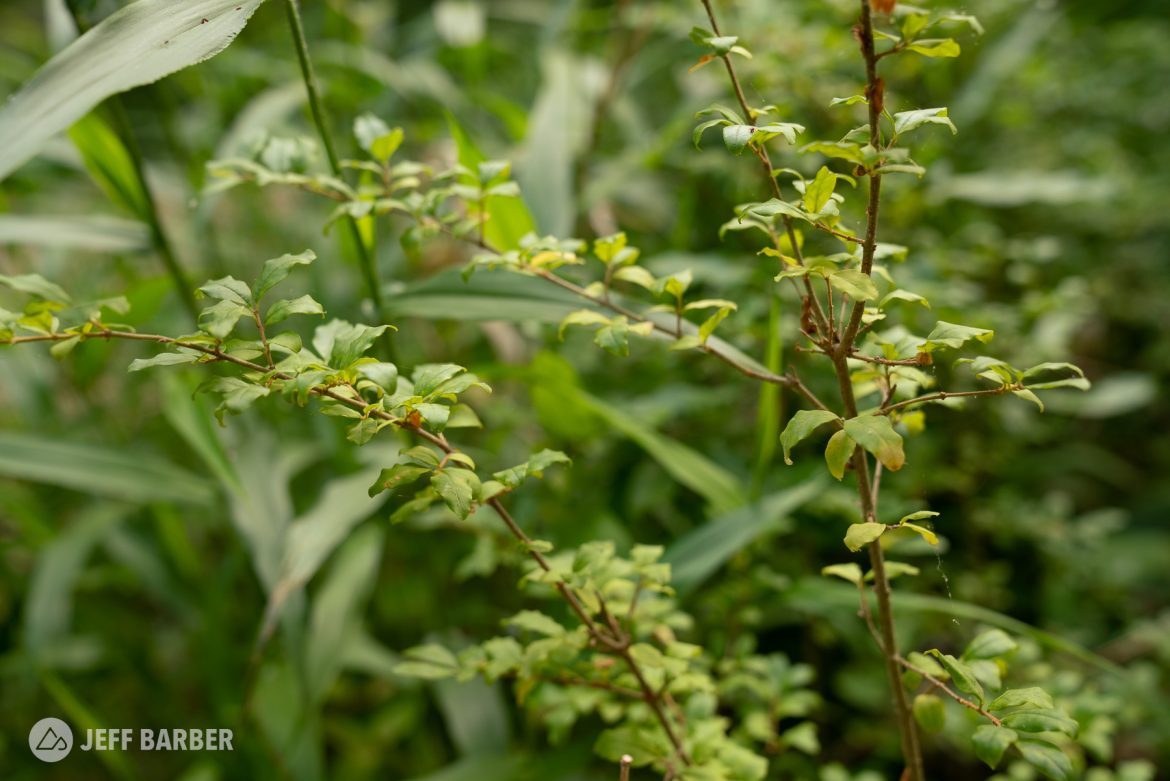
🌲 A Mountain Biker’s Guide to Nature (MBGTN) is a series dedicated to exploring the natural world that intersects with the trails we ride.
Ligustrum Sinense — more commonly known as Chinese privet — may not be the first plant that comes to mind when talking about mountain bike trails. But for me, it’s very closely associated with the trails I ride regularly inside the Atlanta Perimeter.
First things first: Chinese privet is an invasive species in the southeastern United States. According to the US Department of Agriculture National Invasive Species Information Center it “is one of the worst invasive plants in the South. It dominates the shrub layer and often becomes the only shrub underneath trees, especially in streamside areas.” As if that wasn’t bad enough, the NC State Extension Office says “Its fetid flowers bloom in late spring and have an odor that can be offensive to many people. It has become an invasive weed in the southeastern US. It can form an impenetrable thicket and produces toxic berries.” It’s one of the few plants that deer won’t eat, and it even grows in poor soil, allowing the weed to spread unchecked pretty much wherever it pleases.

Privet is native to Europe, north Africa, and Asia where it’s considered an ornamental and is often planted for hedging. In the US, privet can be found from Texas to Massachusetts. Contrary to the description above, I find the flowers are generally pleasant smelling, a bit like sweet, slightly rotten hay.

Fortunately suburban and in-town mountain bikers are more likely to encounter privet than those exploring trails in natural, undeveloped areas like National Forests. One of the local trails I regularly ride is unofficially known as ‘Privet Underground’ because it’s been carved out beneath a tangled canopy of privet run wild. Here, the plant takes on tree form and provides riders welcome shade from the sun and forms a natural barrier to shortcutting.
Privet roots tend to be fairly shallow, and since the plant often grows near sandy stream beds, even fairly large shrubs and trees can pulled up by their roots. On mountain bike rides it’s not uncommon to pull privet that’s encroaching onto the singletrack while stopped waiting for the rest of the group to catch up. A few weeks ago I yanked a privet plant that had clearly been pulled up once before. It had re-rooted itself, with the original plant laying on its side and the new growth stretching vertically. It seems the only way to truly get rid of privet is to not only pull it out of the ground, but also to burn it. Or at least make sure its roots can’t find the ground again.
The woody stems and branches, which can eventually grow trunk-size, seem incapable of growing in a straight line. Privet leaves and its fruit are mildly poisonous to humans, though birds are known to eat the berry-like fruit.
Over time my feelings about privet have evolved from hate to something like grudging acceptance. Yes, it’s invasive and can overgrow a trail in a matter of weeks. At the same time, many of my favorite in-town trails wouldn’t be the same without it. Just do me one favor: pull up the privet once it starts getting too close to the trail.
























2 Comments
May 28, 2021
May 22, 2021